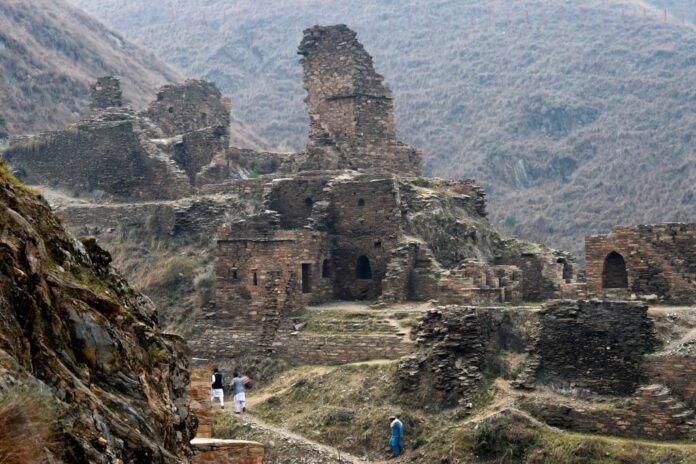ISLAMABAD: The speakers at a seminar on Monday underlined the need to promote religious tourism by projecting the Gandhara civilization and Buddhist heritage of Pakistan at the international level in an effective way.
The seminar titled ‘Gandhara Civilization and Buddhist Heritage of Pakistan’ was aimed at studying and analyzing the deep footprints of Buddhism origin and civilization in Pakistan.
The seminar was organized by Islamabad Policy Research Institute (IPRI) in collaboration with MISIS (Myanmar).
The highly intellectual discourse thread barely dwelt into the rich culture, history and monuments of Buddhism in Pakistan, as it is the seat of the ancient religion.
The speakers were Aye Kyaw, Managing Director and CEO of Rubyland Tourism Services, Myanmar; Dr Nadeem Omar Tarar, Gandhara Chair University of Wah; Ramesh Kumar Vankwani, MNA and Patron-in-Chief of Pakistan Hindu Council; and Dr Pyiet Phyo Kyaw, Prof. Department of Archaeology, University of Yangon, Myanmar. Former Ambassador to Vietnam, Shahid Kiani was the discussant.
The speakers said that a couple of well-prepared documentaries were needed to project the culture and history of Pakistan vis-à-vis Buddhism. “Museums and other relevant literature are too dry, and does not carry the required enthusiasm,” they noted.
They called for furthering tourist exchange, as well as incoming of monks so that more harmony and cooperation between the great civilizations can be buoyed.
The need for inviting cultural attaches from Buddhist countries, as well as archeologists, was also underlined.
It was pointed out that the culture pertains to an era between 200 BC and 900AD, and the present Pakistan territory was home to the first and largest lived urbanized civilization.
Dr Nadeem Omar Tarar, Gandhara Chair at University of Wah, remarked that the state ownership of Buddhist heritage was very old in Pakistan. The country used to issue souvenir stamps on such special occasions, and the Rs 5 postal stamp in 2002 on the 50th anniversary of Pakistan-Japan relations was a case in point, he added.
He also said that a book on Raja Tridev Rao: Buddhism in Pakistan was published in 1955. This was why, he noted, from 1950 to 1969, Buddhism was part and parcel of academic discourse.
The major highlight of Pakistan is that apart from Gandhara, Taxila, Swat, Waziristan and Northern Areas, Sindh and Punjab also have major traces of Buddhism. This makes Pakistan the epic-centre of Buddhism, as it houses seven great museums and numerous stupas, too, and Mohenjo-Daro is a classic melting point.
While highlighting the importance of Taxila, it was noted that Taxila University is the oldest in the world and it has the oldest surviving manuscripts, the site of transmission of Buddhism to Southeast Asia, origin of literary works, as well as the home of the second Buddha (Padmasambhava – a Buddhist sage from Swat), and renowned Gandhara sculptures.
Moreover, Panini – the ancient Sanskrit writer — was born in Swabi.
The seminar recommended that efforts should be made to highlight the potential of the cultural diplomacy of Gandhara. It was observed that SAARC members manifest the commonality of Buddhism, and Pakistan should create a Buddhist international circuit of Gandhara, and celebrate International Buddha Day in Pakistan.
Ramesh Kumar, Patron-in-chief of Pakistan Hindu Council, said that Buddhism presents the peaceful and pluralistic face of Pakistan. “There are 520 million worldwide followers, and China’s 18% population is Buddhist.”
The establishment of a regulatory authority to promote Buddhist education and tourism, as well as the protection of other minority religions was underscored.






















